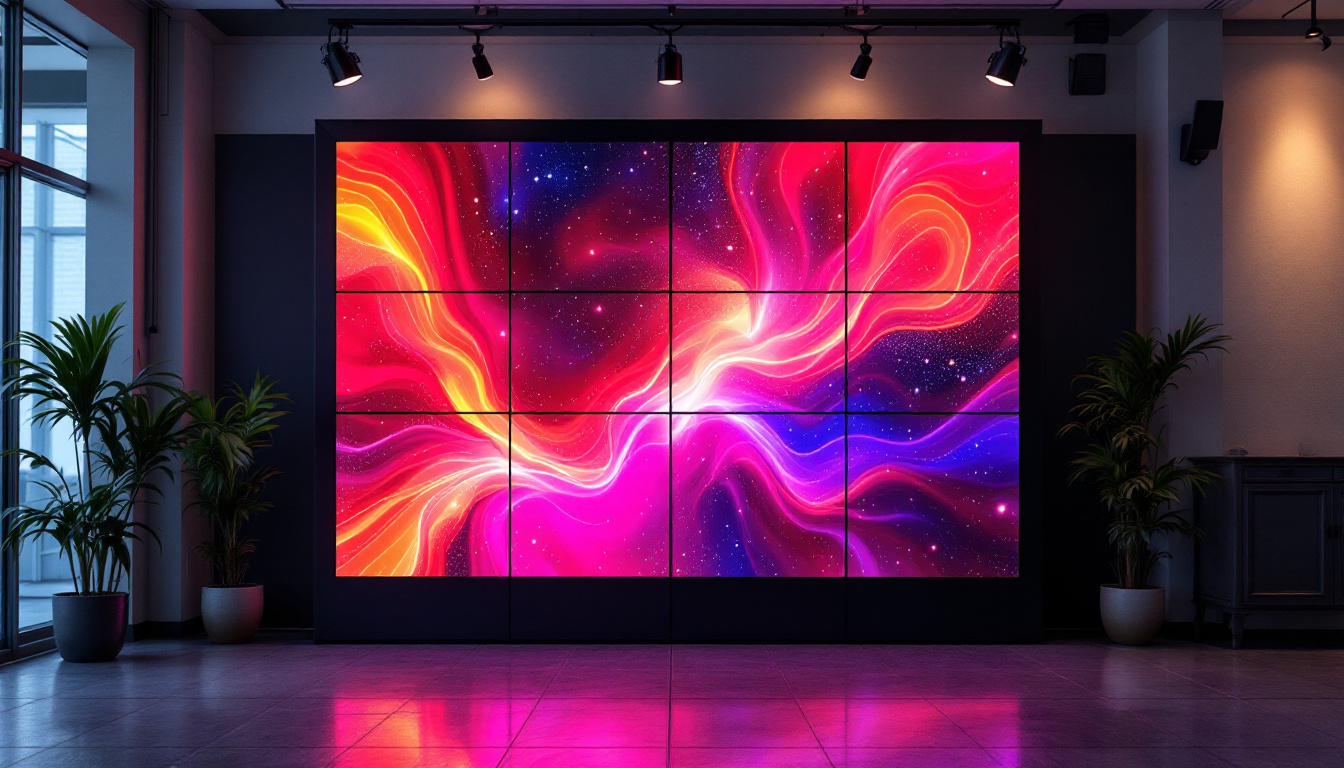The world of display technology has undergone significant transformations over the past few decades, leading to innovations that have changed how information is presented. Among these advancements, OLED (Organic Light Emitting Diode) transparent displays are gaining traction, offering unique capabilities that traditional LED displays cannot match. This article explores the intricacies of OLED transparent displays, their advantages, applications, and the future of display technology.
Understanding OLED Technology
To appreciate the significance of OLED transparent displays, it is essential first to understand OLED technology itself. OLED is a type of display technology that utilizes organic compounds to emit light when an electric current is applied. This results in vibrant colors, high contrast ratios, and the ability to produce true blacks, as individual pixels can be turned off completely. The innovation behind OLED technology has revolutionized the way we experience visual content, paving the way for advancements in various fields, from consumer electronics to automotive displays.
How OLED Works
At the core of OLED technology are organic materials sandwiched between two electrodes. When electricity flows through these materials, they emit light. The layers typically consist of a cathode, an emissive layer, a conductive layer, and an anode. The emissive layer contains organic compounds that emit light in response to electrical stimulation, while the conductive layer helps transport electrons. This intricate design allows for precise control over the light emitted, enabling stunning visuals that capture the viewer’s attention.
One of the standout features of OLED displays is their flexibility. Unlike traditional LCDs, which require a backlight, OLEDs can be made on flexible substrates, enabling the creation of curved and even transparent displays. This flexibility opens up a new realm of possibilities for design and application. For instance, architects and designers are exploring how transparent OLEDs can be integrated into windows and walls, creating interactive environments that blend technology with everyday spaces. Additionally, the potential for wearable technology is immense, as OLEDs can be seamlessly integrated into clothing and accessories, enhancing both functionality and aesthetic appeal.
Benefits of OLED Technology
OLED technology offers several advantages over traditional LED and LCD displays. These include:
- Superior Color Accuracy: OLED displays can produce a wider color gamut, resulting in more vivid and lifelike images.
- Better Contrast Ratios: With the ability to turn off individual pixels, OLED displays achieve true blacks, enhancing overall contrast.
- Thinner and Lighter Design: The absence of a backlight allows for slimmer and lighter displays, making them ideal for portable devices.
- Wide Viewing Angles: OLED screens maintain color accuracy and brightness from various angles, unlike traditional displays that may suffer from color distortion.
Moreover, OLED technology is also energy-efficient, particularly when displaying darker images, as less power is consumed when pixels are turned off. This efficiency can lead to longer battery life in portable devices, which is a crucial factor for consumers today. Furthermore, the rapid response time of OLED screens results in smoother motion rendering, making them particularly appealing for gaming and high-definition video playback. As manufacturers continue to innovate, we can expect even more enhancements in OLED technology, further solidifying its place as a leading choice for modern display solutions.
What is a Transparent OLED Display?
A transparent OLED display is a type of OLED technology that allows light to pass through the screen. This unique feature enables users to see through the display while still viewing images or information on the screen. Transparent OLEDs are made by using transparent materials for the electrodes and substrates, which allows for a see-through effect.
How Transparent OLEDs Work
Transparent OLED displays function similarly to regular OLEDs, but with a few key differences. The transparent electrodes are typically made from materials such as indium tin oxide (ITO), which allows light to pass through while still enabling the display to emit its own light. The organic layers remain largely the same, allowing for the same vibrant colors and deep blacks.
When powered on, the display emits images while simultaneously allowing ambient light to pass through. This dual functionality creates a unique visual experience, where the displayed content can coexist with the background environment. The technology leverages the principles of electroluminescence, where organic compounds emit light when an electric current is applied. This allows for a high level of brightness and contrast, making the images appear vivid even in well-lit conditions.
Applications of Transparent OLED Displays
Transparent OLED displays have a wide range of applications across various industries. Some of the most notable include:
- Retail and Advertising: Transparent displays can be used in storefronts to showcase products while allowing customers to see through to the store interior.
- Automotive: In vehicles, transparent displays can provide essential information to drivers without obstructing their view of the road.
- Smart Homes: Transparent displays can be integrated into windows or walls, providing information while maintaining the aesthetics of the home.
In addition to these applications, transparent OLED technology is also making waves in the field of augmented reality (AR). By overlaying digital information onto a real-world view, these displays can enhance user experiences in gaming, training, and navigation. For example, a transparent OLED screen could be used in a heads-up display (HUD) for pilots or surgeons, allowing them to access critical data without diverting their attention from their primary tasks. Furthermore, as the technology continues to evolve, we may see transparent OLEDs being utilized in wearable devices, providing users with seamless access to notifications and information while remaining unobtrusive.
Moreover, the potential for transparent OLEDs extends into the realm of architecture and interior design. Imagine buildings with windows that can display dynamic artwork or information while still allowing natural light to flood in. This could revolutionize the way spaces are designed and experienced, merging functionality with aesthetic appeal. As research and development in this area progress, we can anticipate even more innovative uses for transparent OLED displays that blend seamlessly into our daily lives.
Advantages of Transparent OLED Displays
Transparent OLED displays offer several advantages that make them an attractive option for various applications. These benefits include:
Enhanced User Experience
By allowing users to see through the display, transparent OLEDs create a more immersive experience. This is particularly beneficial in retail environments, where customers can view products while also engaging with digital content. The combination of real-world objects and digital information can enhance storytelling and brand engagement.
Space Efficiency
Transparent displays can be integrated into existing environments without taking up additional space. For instance, a transparent screen can be placed in a window, providing information without requiring extra physical space for a traditional display. This is particularly useful in urban settings where space is often limited.
Energy Efficiency
Transparent OLED displays can be more energy-efficient than traditional displays. Since they can allow ambient light to pass through, they may require less power to display content, especially in well-lit environments. This energy efficiency can lead to lower operating costs and a reduced environmental impact.
Challenges and Limitations
Despite their many advantages, transparent OLED displays also face several challenges and limitations that must be addressed for widespread adoption.
Manufacturing Complexity
The production of transparent OLED displays is more complex than that of traditional displays. The materials used must be carefully selected to ensure transparency while maintaining performance. This complexity can lead to higher manufacturing costs, which may deter some manufacturers from investing in this technology.
Brightness and Visibility
While transparent OLED displays can produce vibrant colors, their visibility can be affected by ambient light conditions. In bright environments, the contrast between the displayed content and the background may diminish, making it challenging for users to see the information clearly. This limitation necessitates ongoing research to enhance brightness and visibility.
Durability Concerns
Like all OLED technology, transparent OLED displays can be susceptible to burn-in, where static images can leave a permanent mark on the screen. This concern is particularly relevant in applications where the display may show static content for extended periods. Manufacturers are working on solutions to mitigate burn-in issues, but it remains a consideration for potential users.
The Future of Transparent OLED Displays
The future of transparent OLED displays is promising, with ongoing advancements in technology and materials. As research continues, several trends are emerging that could shape the future of this innovative display technology.
Integration with Augmented Reality
One of the most exciting prospects for transparent OLED displays is their potential integration with augmented reality (AR) applications. By overlaying digital information onto the real world, transparent displays can create immersive experiences that enhance navigation, gaming, and education. This integration could revolutionize how users interact with their environments.
Advancements in Manufacturing Techniques
As manufacturing techniques improve, the cost of producing transparent OLED displays is expected to decrease. Innovations such as roll-to-roll printing and new materials could streamline production processes, making transparent OLEDs more accessible to a broader range of industries and applications.
Increased Adoption in Smart Cities
With the rise of smart cities, transparent OLED displays could play a crucial role in urban environments. These displays can be integrated into public infrastructure, providing real-time information to citizens while maintaining the aesthetic appeal of the cityscape. From public transportation updates to interactive wayfinding, the potential applications are vast.
Conclusion
Transparent OLED displays represent a significant leap forward in display technology, offering unique advantages that traditional displays cannot match. With their ability to blend digital content with the real world, these displays open up new possibilities for various industries, from retail to automotive and beyond. While challenges remain, ongoing research and advancements in manufacturing techniques are paving the way for a future where transparent OLED displays become commonplace.
As technology continues to evolve, the potential for transparent OLED displays is limited only by imagination. The journey towards a more integrated and visually dynamic world is just beginning, and transparent OLEDs are at the forefront of this exciting transformation.
Discover the Future of Display with LumenMatrix
Embrace the transformative power of transparent OLED displays with LumenMatrix, a pioneer in LED display technology. Our extensive range of solutions, including the innovative LED Transparent Display, is designed to captivate your audience and elevate your brand’s visibility. Experience the future of visual communication today and check out LumenMatrix LED Display Solutions to see how we can help you create unforgettable visual experiences.































